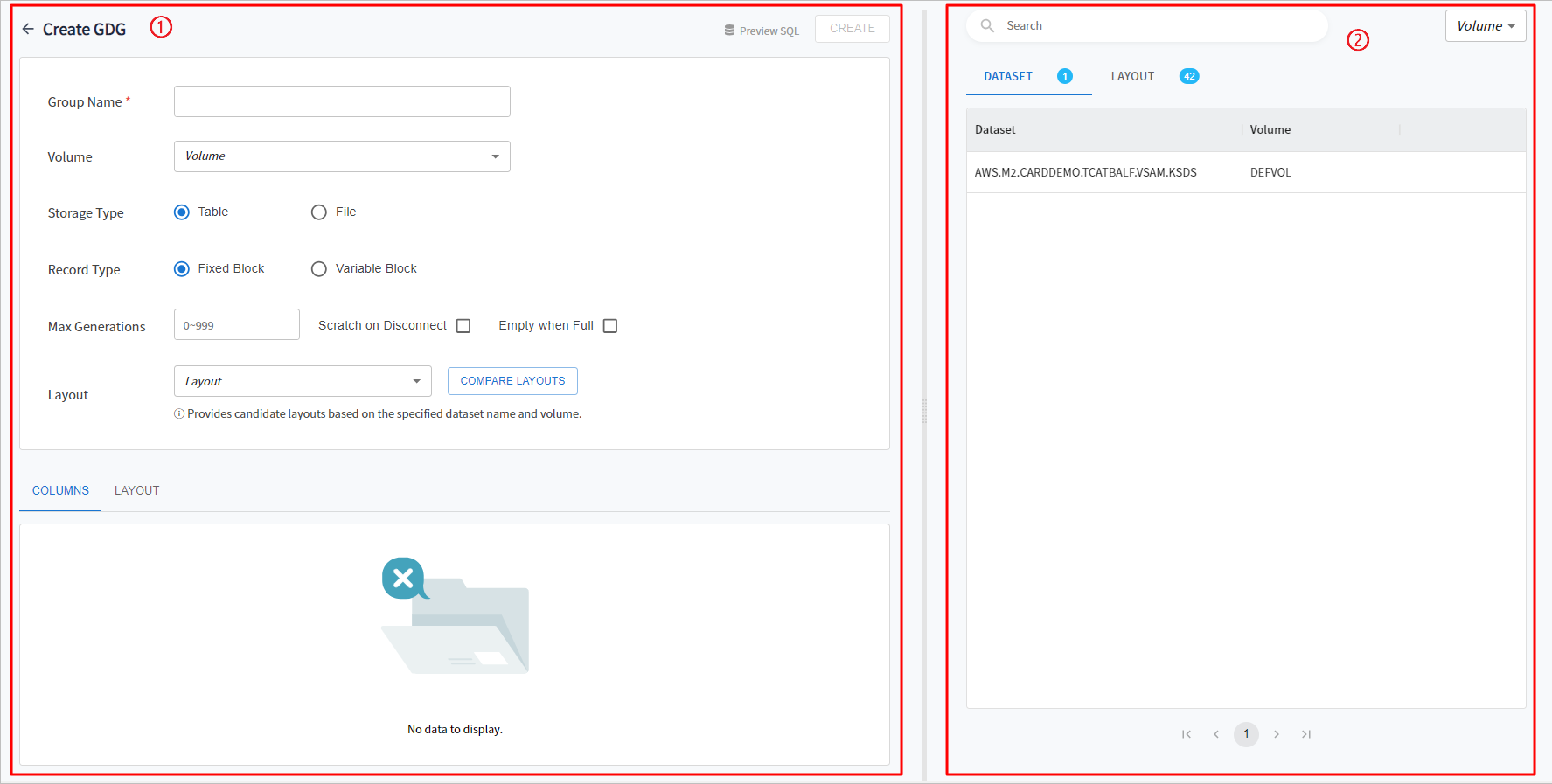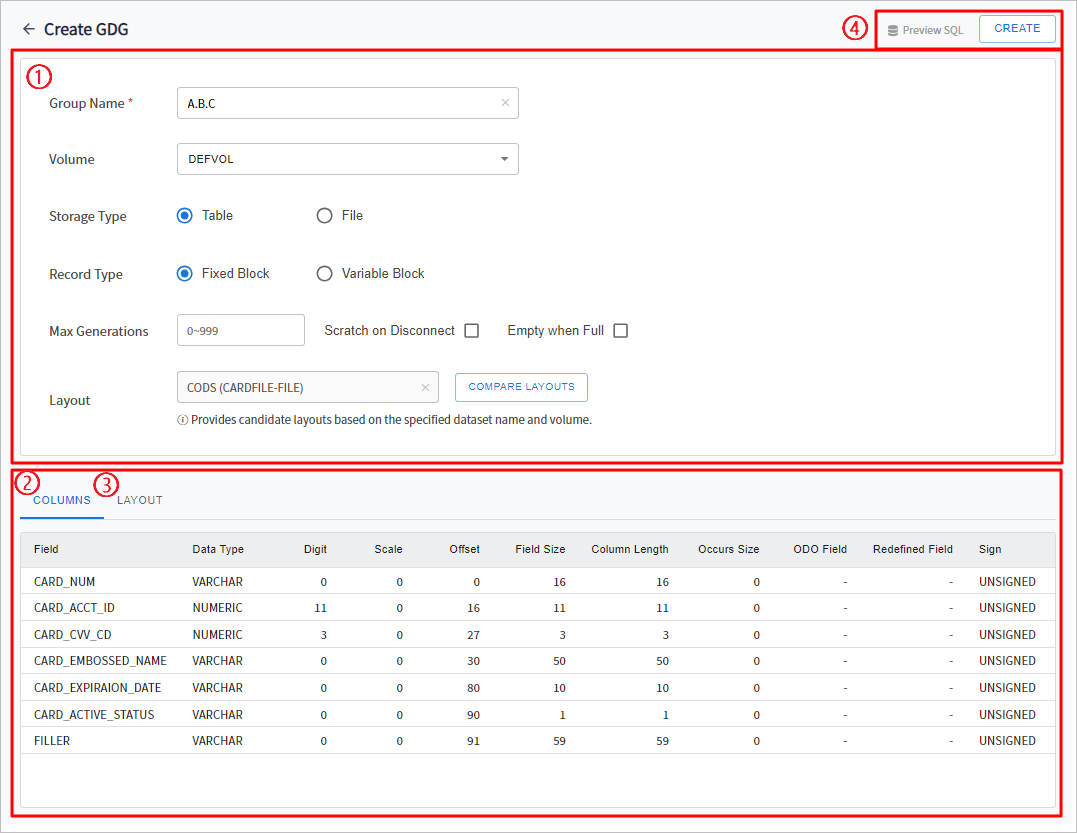Creating Generation Data Groups
In the Generation Data Group screen, click [CREATE] to go to the Create Generation Data Group page, where you can create generation data groups.
This page is divided into two sections: Create GDG for specifying details of a new GDG, and Candidate List of GDGs, which shows candidate GDGs yet to be created. You can adjust the screen ratio by dragging the bar between the two sections.

-
① Create GDG
Specify details for a new generation data group to create.
-
② Candidate List of GDGs
View candidate generation data groups in a table.
| Currently, the screen shows a list of candidate datasets, not generation data group, which will be supported later. For more information about candidate datasets, see Creating Datasets. |
Settings
The Create GDG section comprises four elements: Input Fields for specifying details of a new GDG, the [COLUMNS] tab displaying layout fields arranged in columns, the [LAYOUT] tab for viewing all layout fields, and function buttons located at the top right on the screen.

The following describes each of the four elements.
-
① Input Fields
Specify details for a generation data group to create.
The following describes each input field.
Field Description Group Name
Specify the name of a generation data group by entering it manually or selecting one from the list of candidate GDGs.
Volume
Specify the volume for the new generation data group by selecting it from the dropdown menu or the list of candidate GDGs.
Storage Type
Specify the storage type for the new generation data group. When selecting the File type, you need to additionally specify the path of the file dataset.
-
Table: Stores data in tables.
-
File: Stores data in files.
Record Type
Specify the dataset record type.
-
Fixed Block: Fixed-length records. All records have the same length.
-
Variable Block: Variable-length records. Records vary in size.
Max Generations
Specify the maximum number of datasets to be managed by the generation data group, ranging from 0 to 999. The default value is 255.
Scratch on Disconnect
Specify whether to delete generation datasets when unregistering them.
-
Y: Deletes generation datasets that have been unregistered.
-
N: Does not delete generation datasets that have been unregistered.
Empty when Full
Specify whether to unregister existing generation datasets when the maximum number of datasets is exceeded.
-
Y: Unregisters all existing generation datasets when the maximum number is exceeded by a newly added dataset.
-
N: Unregisters only the oldest generation dataset when the maximum number is exceeded by a newly added dataset.
Layout
Select the layout for the new generation data group.
You can view the list of candidate layouts that match the specified generation data group and volume. The layout name is shown in the form of
PROGRAM_NAME(FD). The layout list will not be shown if there is no matching layout for the generation data group and volume.Click the [COMPARE LAYOUTS] button to compare all loaded layouts. For more information about the feature, see Compare Layouts
-
-
② [COLUMNS] Tab
View the selected layout’s fields that will be arranged in individual columns.
-
③ [LAYOUT] Tab
View all the fields of the selected layout. The fields are listed in a tree table sorted by level.
-
④ Function Buttons
Button Description [Preview SQL]
Shows a preview of the SQL CREATE statement for the generation data group to be created, when you hover the mouse over the button.
[CREATE]
Creates a generation data group. This button remains inactive in the following cases.
-
The generation data group name is not specified.
-
No volume is selected.
-
No layout is selected.
-